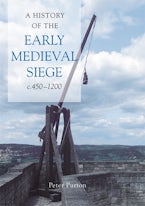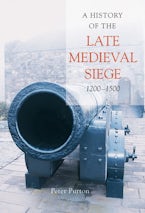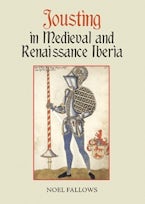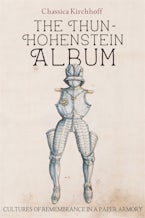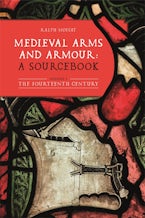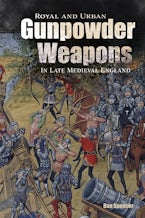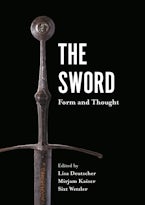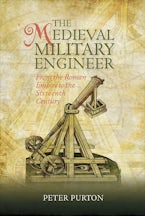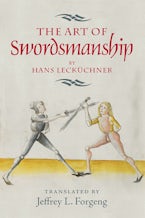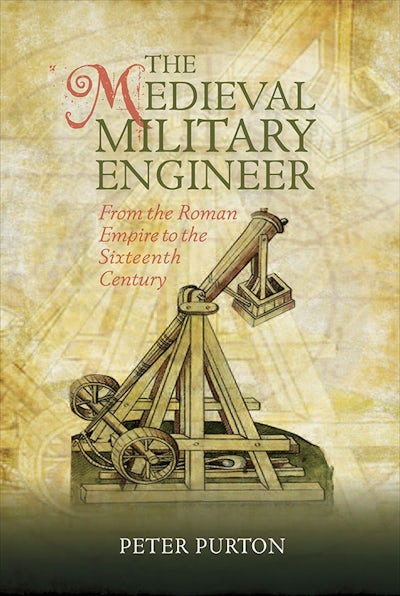
Title Details
365 Pages
23.4 x 15.6 cm
30 b/w illus.
Series: Armour and Weapons
Series Vol. Number:
7
Imprint: Boydell Press
The Medieval Military Engineer
From the Roman Empire to the Sixteenth Century
- Description
- Contents
- Reviews
Sheds light on the skills and techniques of the medieval military engineer, over a thousand year sweep.
The results of medieval engineering still surround us - cathedrals, castles, stone bridges, irrigation systems. However, the siege artillery, siege towers, temporary bridges, earthwork emplacements and underground mines used for war have left little trace behind them; and there is even less of the engineers themselves: the people behind the military engineering achievements. The evidence for this neglected group is studied here.
The author begins byconsidering the evolution of military technology across centuries, and the impact of new technologies in the context of the economic and social developments which made them possible. He looks at how military engineers obtained their skills, and the possible link with scholastic scientific awareness. With the increased survival of government records from the middle ages, engineers acquire names and individuals can be identified. And the fifteenth century -the age of polymaths such as Leonardo da Vinci - saw a new type of literate military engineer, part of a recognized profession, but with its roots in a thousand years of historical development.
PETER PURTON, D Phil (Oxon), FSA, has written extensively on medieval fortifications and siege warfare; his publications include the comprehensive two-volume history of the medieval siege (Boydell, 2010).
The results of medieval engineering still surround us - cathedrals, castles, stone bridges, irrigation systems. However, the siege artillery, siege towers, temporary bridges, earthwork emplacements and underground mines used for war have left little trace behind them; and there is even less of the engineers themselves: the people behind the military engineering achievements. The evidence for this neglected group is studied here.
The author begins byconsidering the evolution of military technology across centuries, and the impact of new technologies in the context of the economic and social developments which made them possible. He looks at how military engineers obtained their skills, and the possible link with scholastic scientific awareness. With the increased survival of government records from the middle ages, engineers acquire names and individuals can be identified. And the fifteenth century -the age of polymaths such as Leonardo da Vinci - saw a new type of literate military engineer, part of a recognized profession, but with its roots in a thousand years of historical development.
PETER PURTON, D Phil (Oxon), FSA, has written extensively on medieval fortifications and siege warfare; his publications include the comprehensive two-volume history of the medieval siege (Boydell, 2010).
Preface
Military engineers in the Middle Ages
Late Antiquity and the early "middle ages": were the "Dark Ages" really dark?
Anonymous but effective: the engineers and technicians of the ninth to eleventh centuries
The engineer recognised
Engineers in demand: innovation and development in the thirteenth century
Old and new technology and its operators in the fourteenth and early fifteenth centuries
Polymaths and specialists in the fifteenth century
Postscript: from medieval to [early] modern in the sixteenth century
Appendix: Military engineers and miners in the Pipe Rolls of the English Exchequer
Bibliography of primary sources
Bibliography of secondary sources
Military engineers in the Middle Ages
Late Antiquity and the early "middle ages": were the "Dark Ages" really dark?
Anonymous but effective: the engineers and technicians of the ninth to eleventh centuries
The engineer recognised
Engineers in demand: innovation and development in the thirteenth century
Old and new technology and its operators in the fourteenth and early fifteenth centuries
Polymaths and specialists in the fifteenth century
Postscript: from medieval to [early] modern in the sixteenth century
Appendix: Military engineers and miners in the Pipe Rolls of the English Exchequer
Bibliography of primary sources
Bibliography of secondary sources
"[An] excellent and ambitious book which fills a gap in the literature. It should be essential reading for all scholars interested in the military and technological history of the Middle Ages." HISTORY
"Purton has written an important book which has identified further trails to blaze. . . . [A] useful introduction on the evolution and development of military engineering and engineers in the postclassical, premodern, world." SPECULUM
"Peter Purton has done an impressive job documenting the multifaceted existence of the ingenarii - those working with military technologies of many types - across Western Europe, Byzantium, and the Islamic world (and briefly even further afield) over the course of a millennium." Steven A. Walton, Technology and Culture
Hardcover
9781783272785
April 2018
£80.00 / $115.00
Ebook (EPUB)
9781787442009
April 2018
£19.99 / $24.95
Ebook (EPDF)
9781787442146
April 2018
£19.99 / $24.95
Title Details
365 Pages
2.34 x 1.56 cm
30 b/w illus.
Series: Armour and Weapons
Series Vol. Number:
7
Imprint: Boydell Press



![A History of the Early and Late Medieval Siege [2 volume set]](https://boydell-brewer-uk.imgix.net/covers/9781843834502.jpg?auto=format&w=145)

